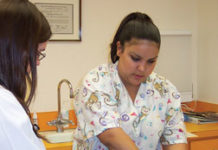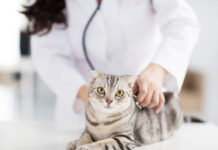Q: We have an overweight male Siamese (22 pounds) who recently went to the veterinarian to have his teeth cleaned. On retrieving him, we were told he has stage 2 chronic kidney disease (CKD).
We were shocked that the veterinarian wants to see him again in a couple of weeks and then every three months. It appears that not a lot can be done for kidney disease other than a prescription diet and an emphasis on the cat’s hydration.
Our question is, if basically nothing can be done, why are we taking him back every three months? Any advice you can offer would be appreciated.
A: Thanks for getting in touch, and I am very sorry to hear of your cat’s recent diagnosis. While I understand your concern and confusion, I am hopeful that a brief discussion of the management of CKD will be helpful. In addition, please refer back to our January 2023 issue, which has an informative article on catching CKD early. You can access that article at catwatchnewsletter.com.
To start, please consider discussing the possibility of a weight-loss program with your veterinarian, as being overweight can have negative impacts on the wellness of any cat, and this impact may be exacerbated by many diseases.
The issue of weight loss in cats with CKD is controversial, and while it is important to maintain lean body mass if a weight loss program is pursued, this determination should be made in close consultation with a veterinarian and/or veterinary nutritionist. Weight loss that occurs too rapidly can cause hepatic lipidosis, or fatty liver disease, which can be fatal.
It is true that the cornerstones of therapy for cats with CKD are assuring adequate hydration, limiting dietary proteins and phosphorus, and providing adequate dietary antioxidants and B vitamin supplementation, but it is also important to realize that cats can develop health problems secondary to CKD that should be monitored for and addressed promptly if they occur.
The most common of these is systemic hypertension, which is high blood pressure. Since the kidneys are essential in the maintenance of normal blood pressure, it makes sense that cats with CKD may develop abnormalities of blood pressure, and this is most commonly seen as hypertension in feline CKD patients.
Hypertension can damage the heart, brain, and eyes, and may worsen kidney function. Retinal detachment, which usually leads to blindness, is of particular concern in cats with hypertension. Regular monitoring of blood pressure and prompt treatment of hypertension, if identified, is essential to maintaining the well-being of cats with CKD.
Cats with CKD may also begin to lose protein in their urine as the disease progresses, which it most commonly does, and there are therapies available that can minimize this loss of protein in the urine.
For this reason, regular monitoring of urine for inappropriate protein loss is very important so that therapy can be instituted if protein in the urine (called “proteinuria”) is identified.
The kidneys are also important in maintaining normal red blood cell production, primarily through the secretion of a hormone called erythropoietin.
Cats with CKD may suffer from decreased erythropoietin production, which can cause anemia (decreased red blood cell concentration in the blood). Regular monitoring of red blood cell concentration can prompt therapies to address anemia (transfusions, erythropoietin administration) if they develop.
Finally, since the kidneys are very important in maintaining normal electrolyte concentrations in the blood, cats with CKD may experience electrolyte abnormalities that can be addressed if they are identified during regular screenings.
I hope that this helps, and please continue to work closely with your veterinarian to assure the best care.
Best of luck, and please send an update when you can.




